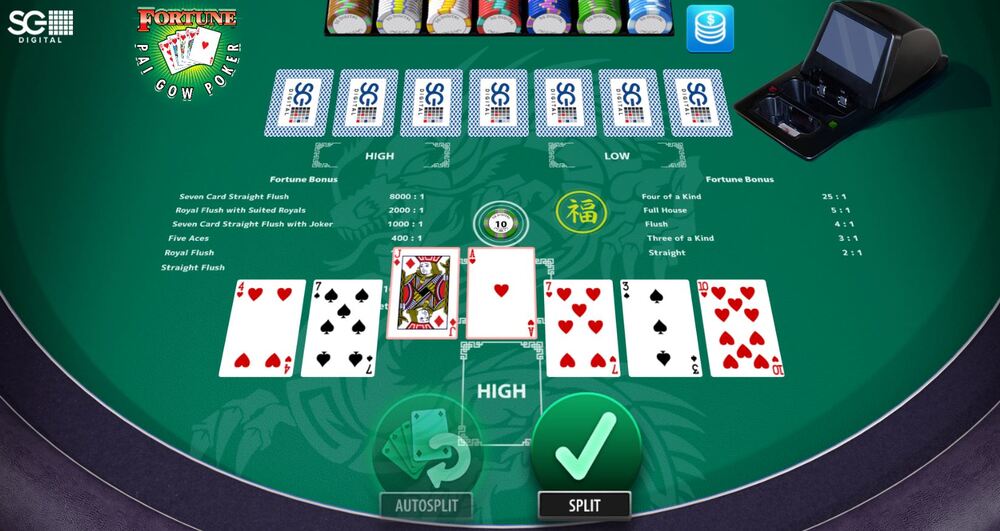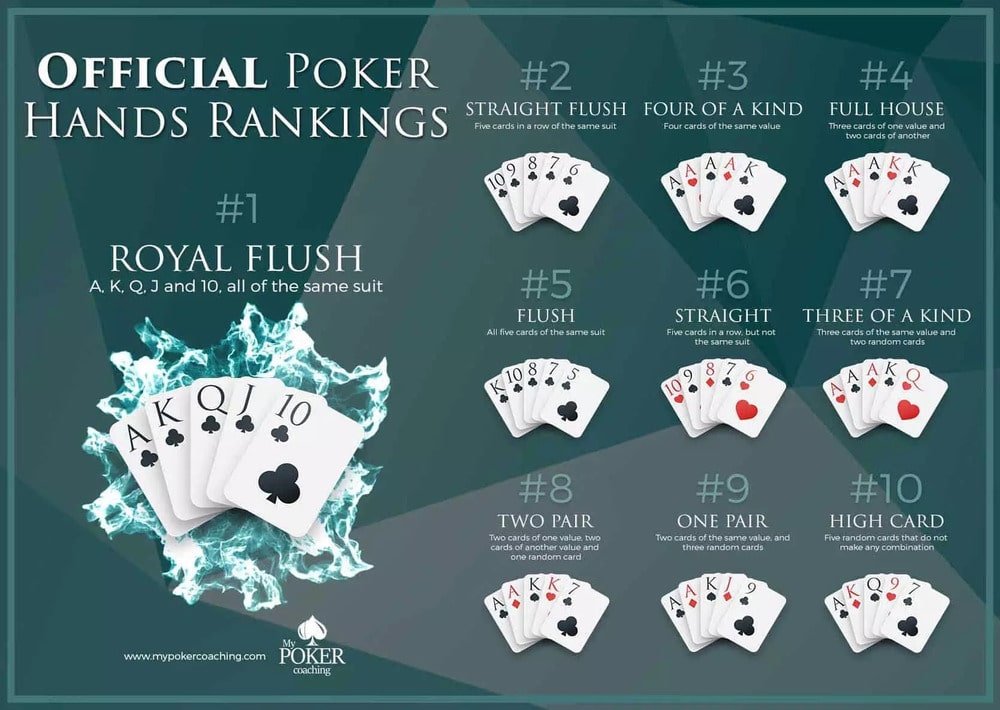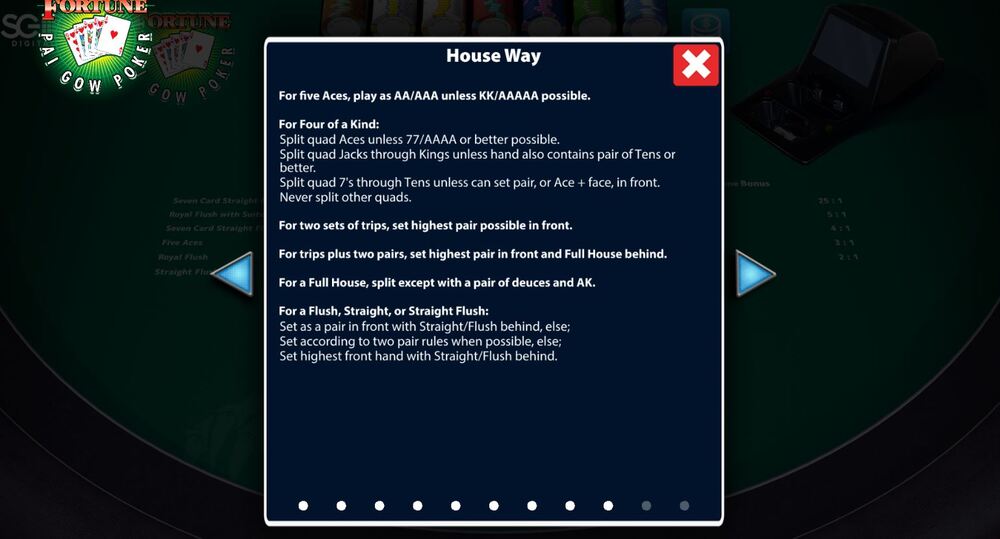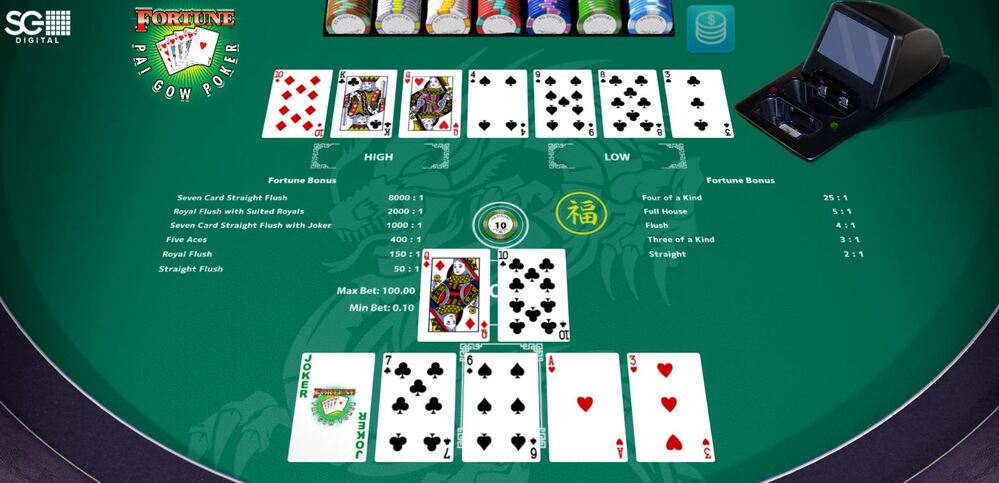How To Play Pai Gow Poker: Rules & Strategy Tips

13 minutes
Last Updated: March 17, 2024
In a sea of casino card games available in online casino lobbies, Pai Gow Poker is one of the most unique and entertaining casino poker variants.
Pai Gow Poker is a game played with seven cards in total where you need to split the cards into two hands, one made up of five cards, and another made up of two cards.
Along with the main game, Pai Gow Poker also offers a special “Fortune Bonus” bet, which lets you play for massive payouts if you can make the strongest hands in the game.
In this article, I will explain the basic rules of Pai Gow Poker, look at basic Pai Gow Poker strategy, and give you some tips and pointers you can use the next time you play the game.
Keep reading to learn how to play Pai Gow Poker the best way and get the most value for your money at the tables.
How to Play Pai Gow Poker – Basic Rules Explained

The rules of Pai Gow Poker are fairly easy to understand for any poker player, as the game uses the same basic hand rankings as standard poker games. However, there are some things you need to understand about Pai Gow Poker that would not come naturally to a poker player.
Most importantly, you need to understand how dealing works in Pai Gow Poker and what you must do before the dealer’s cards are turned over.
Before a hand of Pai Gow Poker can begin, you must place your wager within the ante bet slot. All other betting slots, if available, are completely optional.
At the beginning of each Pai Gow Poker hand, you will get dealt a total of seven cards and be able to see all of them.
The game will ask you to select two of these cards for the “Low” hand, which comprises just two cards, while the remaining five cards will remain in your “High” hand.
At showdown, your Low hand will be compared against the dealer’s Low hand, while your High hand will be compared against the dealer’s High hand.
Another important Pai Gow Rule is that your High hand must always outrank the Low hand, which means you can’t have a pair in the Low hand and just High Card in the High Hand.
In most online versions of Pai Gow Poker, the game will offer you the Auto Split option, which will help you make your decision on which cards to put in the Low hand.
Once you have split your hand, the dealer will turn over his cards as well and split them according to a set of splitting rules, regardless of how you split your hand.
The two hands are then compared, and you are paid in accordance with the Pai Gow Poker payouts, which are set in stone.
Both the Low and the High hand are compared in accordance with standardized poker hand rankings, as shown in the image below:

It is important to note that the Pai Gow Poker card deck also includes a joker card. In this game, jokers are semi-wild, which means they can be used to complete flushes and straights but only count as an ace in all other scenarios.
Furthermore, some versions of Pai Gow Poker count the “Wheel” as the second strongest straight, which means A2345 ranks higher than 9TJQK in these games.
Pai Gow Poker Payouts – How to Win in Pai Gow Poker
Pai Gow Poker is a very low volatility game because many hands in this game end up in a tie, with the dealer winning one hand and the player winning the other.
Overall, Pai Gow Poker comes with a house edge of 1.3%, which is additionally increased by some casinos charging a 5% commission when the player wins, increasing the house edge to 2.8%.
If no commissions are charged on winnings, Pai Gow Poker actually becomes one of the best casino games to play, as it has both a low house edge and a low volatility level.
When it comes to Pai Gow Payouts on the ante bet, you can expect the following:
- If the dealer wins both hands, you lose the ante bet;
- If the dealer wins one hand and you win one hand, the hand is a tie, and you get your money back;
- If you win both hands, you double your money, winning at 1:1
The most you can win in Pai Gow Poker if you are only playing the ante bet is double your money, which makes the hand ideal for high-stakes players who prefer simple and low-volatility games.
Online casinos will let you up your ante and play for significant stakes, allowing for all sorts of progressive betting strategies and more.
Side Bets in Pai Gow Poker – Fortune Bonus Explained

Source of the image: mrcasinova.com
Pai Gow Poker is offered in many different versions these days, but most of them offer a side bet you can choose to place money on, often referred to as the Fortune Bonus.
If you choose to place money on this side bet, you will get paid anytime you make a Straight or better, regardless of whether you beat the dealer or not.
It is important to note that the way in which you split your hand does not matter for the side bet either. For example, if you are dealt four of a kind and you decide to split the hand into two one-pair hands, you will still get paid for Quads on the side bet.
This makes gameplay much simpler, as you will not be forced to make any tough decisions and will always be able to play optimally for the ante bet, regardless of your side bet.
In fact, you don’t need to think about the side bet at all, as you will get paid in either case if your hand qualifies.
The following payouts are offered if you do place money on the Fortune Bonus slot:
- Seven Card Straight Flush: 8,000:1
- Royal Flush without a Joker: 2,000: 1
- Seven Card Straight Flush with a Joker: 1,000:1
- Five Aces: 400:1
- Royal Flush: 150:1
- Straight Flush: 50:1
- Four of a Kind: 25:1
- Full House: 5:1
- Flush: 4:1
- Three of a Kind: 3:1
- Straight: 2:1
While the Fortune Bonus side bet is the only way to score a truly big win in Pai Gow Poker, it is also important to note that the game significantly diminishes your long-term winning chances.
The side bet increases the house edge and decreases your RTP rate, making it a losing proposition in the long run, which leads me to suggest you avoid it at all times.
If you are chasing a big win, you could try making some small side bets at times but don’t hope these will add up and help you beat the house anytime soon.
The most profitable way to play Pai Gow Poker is without any side bets, and putting too much money on the Fortune Bonus slot is a guaranteed way to cost yourself cash over the long run.
In addition to Fortune Bonus, some forms of Pai Gow Poker offer additional side bets such as:
- Pai Gow Mania – Two side bets possible
- Emperor’s Challenge – Similar to Fortune Bonus
- Progressive Fortune Pai Gow – Win the jackpot with seven card straight flush
Pai Gow House Way Explained

Like most casino games, Pai Gow Poker comes with a “House Way,” which is the way the dealer plays the game, and the dealer will set the cards up for you if you ask him to.
The house way is more or less the optimal way to play Pai Gow Poker, and it can differ slightly from one casino to the next or from one online version to another.
However, most dealers or online Pai Gow Poker games use a similar house way and will make sure to split the cards in a way that most benefits the player. You can always ask for your cards to be split the house way, avoiding any confusion about how to do that.
Since your goal is to win both the High and the Low hand, there are many situations in which the best way to split cards is not completely clear.
For example, leaving a super strong hand like four of a kind in the back, while having just jack high in the front, is usually not a good option, as splitting your quads into two pairs gives more chances to win both hands.
This and all other finesses of the game are usually solved by splitting the cards the house way, which is why I strongly recommend sticking to the house way until you have mastered the game and know exactly why you are using a different strategy in a particular hand of Pai Gow Poker.
Pai Gow Poker Strategy – How Do You Play Pay Gow
Since there aren’t any betting decisions to be made along the way, Pai Gow isn’t too complicated of a game from a strategic point of view. The only bet you’ll ever make is the one at the start of the hand, and you’ll never need to think about other bets and whether they’re worth making.
However, you still have some decisions to make in terms of how you’ll arrange the cards in your hand.

Keeping in mind that your top (low) hand must always be lower ranked than the bottom (high) hand, you need to think about what the best outcome you can hope for is.
To make a profit on a hand of Pai Gow game, you’ll need to beat both of the dealer’s hands, so making a very strong hand at the back while having something like 9-high at the top usually won’t cut it.
You’re much better off having two fairly strong hands than having one super-strong hand coupled with air.
Here are a few simple tips to keep in mind when arranging your Pai Gow hand:
- If you’re dealt no made hand (a pair or better), leave your highest ranking card in the back and put two second highest-ranking cards in the front
- Always split pairs if you have AA with any other pair, two high pairs (JJ through AA) or a high pair coupled with a medium pair (7s through 10s)
- Split two medium pairs or a combination of a high pair and a low pair (22 through 66) unless you have an Ace. If you have an Ace, you can play two pair in the back and Ace-high in the front
- Always split two medium pairs or a medium and low pair combo unless you have an Ace or a King. If you have one of these, you can also play Ace or King-high in the front with two pair in the back
- Always play trips in your back hand unless it’s trip Aces. Split Aces into a pair in the back and Ace-high in the front
- If you have quads that are JJ+, always split them into two pair
- Split quad 77 through TT into two pair unless you have an Ace to play in the front
- With quad 6s or lower, keep quads in the back and play whatever the best hand you can make is in the front
- Always split full houses into a trips + a pair combo unless you also have an extra pair to go with it. In that case, you should play the higher of the pairs in the low hand
- Always split five aces (when you have a Joker) unless you have a pair of Kings to put in the front
This is pretty much all the Pai Gow Poker strategy you need to know. It may feel like a lot of information, but most of it makes sense when you think about it for a while, so you should have no problems memorizing it.
Plus, when you’re playing online, you are free to have these tips open on the side and refer to them if you find yourself in a situation where you’re uncertain what the best play might be.
Start Playing Pai Gow Poker Today
Pai Gow Poker is easily one of the most popular versions of poker games played against the house, and it can be found in most online casinos. Now that you understand the simple Pai Gow Poker rules and some basic Pai Gow Poker strategy, you are ready to play your first hand.
Find an online casino that offers the game and a solid welcome bonus, and start practicing your Pai Gow Poker skills.
I highly recommend playing for lower stakes early on or even trying this game for free on this page.
Then, you can move to high stakes Pai Gow Poker once you feel completely comfortable with how you set up your hands.
Remember that you can always get help from the game in splitting your cards, but if you want to make any adjustments, remember the rules I explained in the strategy portion of this article.
Finally, remember not to overdo it with the side bets, as these are typically a losing proposition that increases the house edge, decreases your win rate, and makes you lose money at a faster pace. Keep all of this in mind, and you will have a ton of fun playing Pai Gow Poker, and you might just come away from the tables richer than you were when you first sat down.
If you like this game, you might also want to try 3 Card Poker or Ultimate Texas Holdem, which are also fun casino poker variations.















